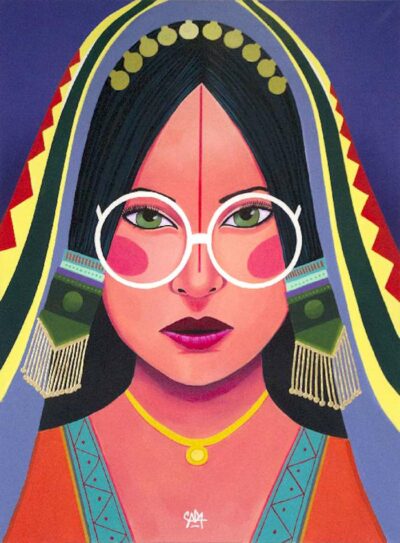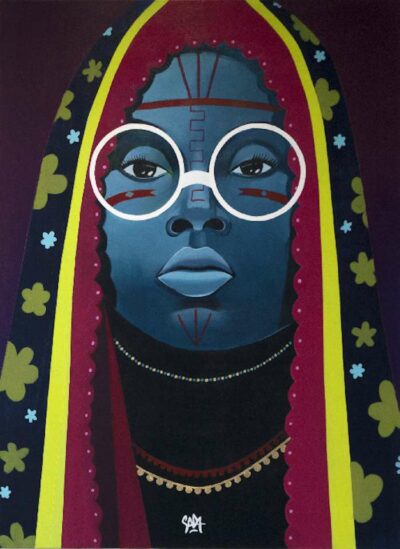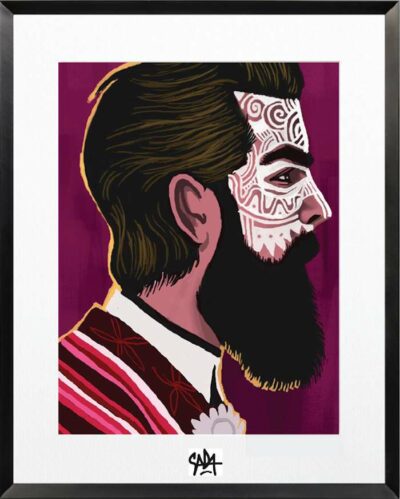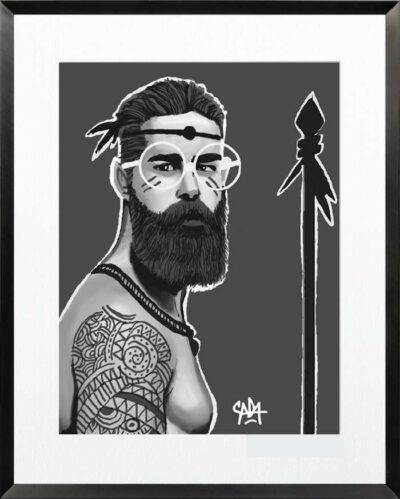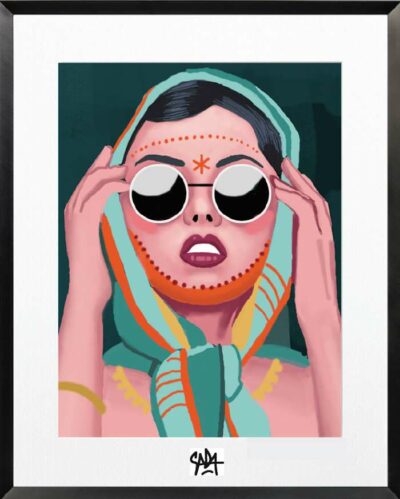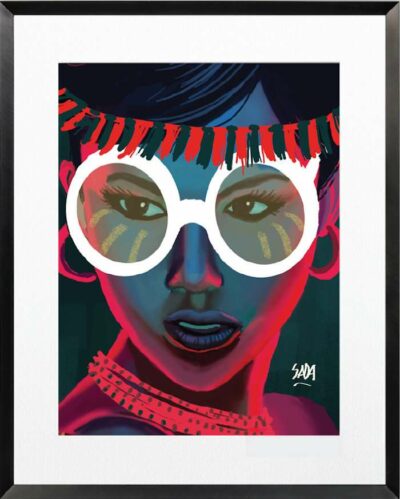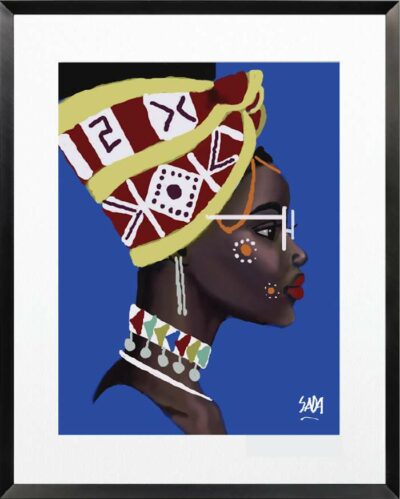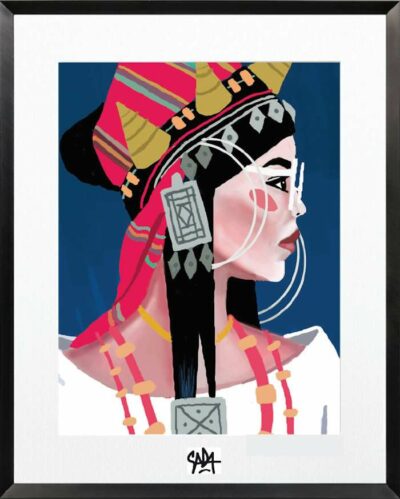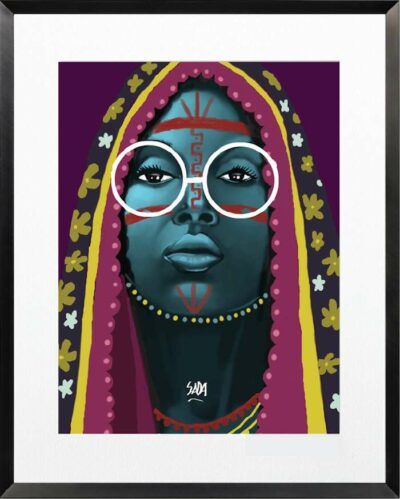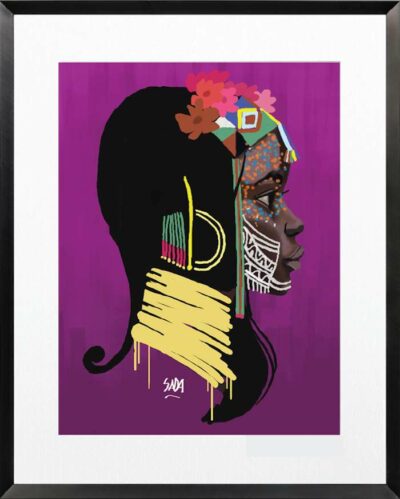BIOGRAPHY
Her portraits of ethnic women are the bridge between roots and current affairs. The artist nurtures a sincere approach that mixes comics, graffiti and painting … around a humanist message.
Both inside and outside, in galleries and in the streets of Paris, Amsterdam, Beirut, Bangkok … Stéphane Assad, Sada by his artist name, goes through the times without dividing up styles. “I cannot confine myself to an icon reproduced as a work in progress.” “To use the street is to have an open-air museum. It takes humility because the work belongs to everyone. We get naked. I like to show those who don’t go to the museum. “.
In 1997, he joined Crew 132. In parallel with his job as artistic director, Stéphane took part in group exhibitions and benefited from publications in artistic magazines, notably “Street art magazine”. In 2017, during a trip to Lebanon, it clicked. Sada gives new meaning to her pictorial approach and invests in the preparation of her first personal exhibition. “Everything starts from the street to arrive at these ethnic portraits. I come from a Lebanese, Guinean, Greek, Syrian cultural mix, from Pas-de-Calais. My artistic approach is a quest for identity. I am swarthy and French. The gaze of others, of society can sometimes destabilize me. »His portraits? Women with mixed codes, dignified and beautiful. Paintings and collages, like his “Bloody Marianne” pasted in Paris – a day before the Republican march in January 2015 – constitute snubbing to extremes, racism, condescending judgments, intolerance. Each expression in the studio or on the concrete of the city is both a word of commitment and a “piece” of beauty in the gray of the walls.
Interview
Sada – Ethnic chic – 2017
Technique: acrylic, gold leaf
Support: canvas
Dimensions: 51.18 * 35.43 in
Year: 2017
Not framed
Signed
Counter signed, dated and titled
Work sold with certificate of authenticity
Proposed by the artist Sada – Paris – France
Delivery: one to two weeks
-
2 000,00€Add to cart
Sada – Ethnic chic 2 – 2017
Technique: acrylic, gold leaf
Support: canvas
Dimensions: 51.18 * 35.43 in
Year: 2017
Not framed
Signed
Counter signed, dated and titled
Work sold with certificate of authenticity
Proposed by the artist Sada – Paris – France
Delivery: one to two weeks
-
2 000,00€Add to cart
Sada – Il en faut peu… – 2018
Technique: Indian ink, ink
Support: 300 gr paper
Dimensions without frame: 23.62 * 15.74 in
Year: 2018
Framed
Signed and dated lower right
Work sold with certificate of authenticity
Proposed by the artist Sada – Paris – France
Delivery: one to two weeks
Sada – Totem Skate – 2020
Technique: acrylic
Support: skate
Dimensions: 31.49 * 7.87 in
Year: 2020
Not framed
Signed
Counter signed, dated and titled
Work sold with certificate of authenticity
Proposed by the artist Sada – Paris – France
Delivery: one to two weeks
Sada – Ethnic chic – 2018
Technique: digital painting print
Support: paper
Dimensions: 23.62 * 15.74 in
Year: 2018
Not framed
Edition: numbered work limited to 50 copies
Signed and titled
Proposed by the artist Sada – Paris – France
Delivery: one to two weeks
Sada – Ethnic chic – 2018
Technique: digital painting print
Support: paper
Dimensions: 23.62 * 15.74 in
Year: 2018
Not framed
Edition: numbered work limited to 50 copies
Signed and titled
Proposed by the artist Sada – Paris – France
Delivery: one to two weeks
Sada – Ethnic chic – 2018
Technique : acrylique + spraycan sur papier
Support : toile
Dimensions : 60 * 40 cm
Année : 2018
Non encadrée
Signée
Contre signée, datée et titrée
Œuvre vendue avec certificat d’authenticité
Proposée par l’artiste Sada – Paris – France
Delivery: one to two weeks
Sada – Ethnic chic – 2018
Technique: digital painting print
Support: paper
Dimensions: 23.62 * 15.74 in
Year: 2018
Not framed
Edition: numbered work limited to 50 copies
Signed and titled
Proposed by the artist Sada – Paris – France
Delivery: one to two weeks
Sada – Ethnic chic – 2018
Technique: digital painting print
Support: paper
Dimensions: 23.62 * 15.74 in
Year: 2018
Not framed
Edition: numbered work limited to 50 copies
Signed and titled
Proposed by the artist Sada – Paris – France
Delivery: one to two weeks
Sada – Ethnic chic – 2018
Technique: digital painting print
Support: paper
Dimensions: 23.62 * 15.74 in
Year: 2018
Not framed
Edition: numbered work limited to 50 copies
Signed and titled
Proposed by the artist Sada – Paris – France
Delivery: one to two weeks
Sada – Ethnic chic – 2018
Technique: digital painting print
Support: paper
Dimensions: 23.62 * 15.74 in
Year: 2018
Not framed
Edition: numbered work limited to 50 copies
Signed and titled
Proposed by the artist Sada – Paris – France
Delivery: one to two weeks
Sada – Ethnic chic – 2018
Technique: digital painting print
Support: paper
Dimensions: 23.62 * 15.74 in
Year: 2018
Not framed
Edition: numbered work limited to 50 copies
Signed and titled
Proposed by the artist Sada – Paris – France
Delivery: one to two weeks


